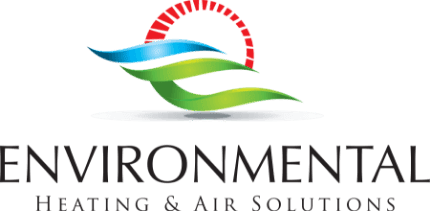Keeping your home safe and comfortable requires staying up to date on the latest changes in the HVAC industry. Here is a preview of some of the changes you can expect to see in 2024.
Reduced HFC Refrigerant Production
As per the American Innovation and Manufacturing Act, the HVAC sector is getting ready to drastically cut down on hydrofluorocarbon output. The AIM Act mandates that, during the next fifteen years, the United States will reduce its use and production of hydrofluorocarbons (HFCs) by 85%. Since HFCs are widely used refrigerants with a significant potential to cause global warming, reducing their production is an essential step towards sustainability. As a result of their restricted use, the HVAC sector anticipates shifting its focus towards more eco-friendly refrigerants.
The EPA estimates that by 2100, the phase-down will have significantly contributed to worldwide efforts to combat climate change, lowering global temperatures by as much as half a degree Celsius. There will be new, less dangerous technologies and refrigerants developed in response to this regulatory drive, which will likely speed up innovation in the HVAC business.
Price Increase for R-410A and R-134A Refrigerants
Recent pricing data reveals that R134a and R410A costs are up to five times higher than the 2014 baseline. R404A may be as much as thirteen times more expensive in some areas. Even though some reports highlight a restricted regional availability of refrigerants, particularly R1234ze, the overall supply is quite steady. If there’s not a shortage, why the increase in prices? The truth is that the higher prices are a result of other nations’ economies competing with the United States. Some foreign nations are intentionally undercutting U.S. markets by financing their own refrigerant manufacturing processes. When this happens, it forces American producers out of business and gives another nation sway over the world’s supply. This phenomenon is commonly referred to as “dumping” and can lead to the formation of economic monopolies.
The United States government countered these practices with anti-dumping taxes, making them retroactive back to June 18, 2019. There is considerable uncertainty about future prices, and suppliers are suddenly faced with increased expenditure for previous output. While the industry adjusts, this is driving up and producing fluctuations in the price of available refrigerant. There is a tariff of around 210% on refrigerants that enter the nation at the moment. The United States could restock its refrigerant supplies by tapping into European markets, but doing so would be as expensive.
Expansion of Smart HVAC
The HVAC sector is set to further integrate smart technology in the next year, completely changing the way HVAC systems work. Smart HVAC systems will improve in both usability and efficiency as they include cutting-edge sensors, algorithms for machine learning and connections to the Internet of Things (IoT). Homeowners can anticipate a rise in automation, customized temperature control and the ability to monitor systems remotely. These innovations not only make life more pleasant, but they also help save money and energy. As smart technologies continue to gain traction, the HVAC sector should expect to see a transition to increasingly complex systems that need specialized knowledge and training. It also paves the way for new services to emerge, such as data analysis and continuous system monitoring, which may benefit consumers even more.
Shift Toward Greener Solutions
There will be a dramatic movement in the HVAC sector toward more environmentally friendly and sustainable practices in the next year. Businesses and homeowners alike are emphasizing their desire for eco-friendly technology, such as HVAC systems that use less energy, smart thermostats and creative ventilation designs. As more and more people become concerned about the impact they have on the environment, we continue to see an increasing demand for energy-efficient HVAC systems and environmentally friendly refrigerants. To further ensure a sustainable and environmentally aware future for the HVAC industry, there will probably be a stepped-up push to promote system optimization, routine maintenance and the use of renewable energy sources. With environmental issues at the forefront, the industry’s dedication to sustainable practices will continue to determine its future course.
Customer-Centered Focus
An industry-wide shift toward putting customers first is coming to the HVAC sector in the next year. A greater focus on the customer’s experience, happiness and tailored solutions is at the heart of this change. Businesses in the HVAC industry will likely spend money on cutting-edge customer care software like chatbots driven by artificial intelligence and simplified communication channels so they can respond faster and provide more personalized services. In addition, HVAC companies will prioritize providing homeowners with clear pricing, improved communication and education so they can make educated choices about their heating and cooling systems. The HVAC business is shifting its focus to the client to build lasting connections with them and earn their loyalty by providing them with efficient solutions and a pleasant, individualized experience.
Greater Use of Ductless Systems
The HVAC industry will likely push the use of ductless systems more and more throughout the next year. Ductless systems are becoming more and more popular because of their adaptability, simplicity and low energy consumption. These systems provide temperature adjustment on a zone-by-zone basis, which significantly cuts down on energy waste and utility bills. In addition to being more cost-effective and offering a faster solution for heating and cooling requirements, ductless systems are also easier to install than conventional ducted systems. The HVAC sector’s interest in ductless systems aligns with several other industry trends, including a laser focus on greener technologies and sustainable living.
Advanced Air Purification
Air filtration technologies will receive a lot more attention and funding from the HVAC sector in the next year. Indoor air quality has recently come to the forefront of people’s minds due to the continued worldwide emphasis on health and wellbeing. Modern heating, ventilation, and air conditioning systems with built-in air filtration systems are increasingly in demand due to their efficacy in eliminating airborne pollutants, allergies and diseases. It is quite probable that the HVAC sector will lead the charge in incorporating state-of-the-art air purification systems, including UV-C light systems and HEPA filters, into both commercial and residential buildings.
Efficiency Through Nanotechnology
Nanotechnologies already exist that improve HVAC heat exchange, air filtration and overall system functionality. Over the next year, the HVAC industry will continue to explore the various ways to use nanomaterials and their applications. As more state-of-the-art technologies make their way into the HVAC industry, we expect to see major improvements in indoor air quality and heating and cooling efficiencies.
Emphasis on Predictive Maintenance
Predictive maintenance, which makes use of smart technology to improve system performance, is becoming more and more of a priority in the HVAC business. The goal of predictive maintenance is to find problems before they become worse by using data collected in real-time via smart sensors and sophisticated algorithms. This preventative method lessens the need for repairs, increases the life of the equipment and decreases downtime. Through the implementation of predictive maintenance, the industry strives to transition from a reactive to a preventative approach, ultimately enhancing system dependability.
The best thing you can do to stay on top of the changes that take place in the HVAC industry is to schedule regular HVAC maintenance. Environmental Heating & Air Solutions technicians are here to keep you updated on the latest changes and how they affect you and your home. We also help Roseville, CA, homeowners with air quality testing, plumbing repairs, home automation and much more. Give us a call now to learn more about taking care of your home’s HVAC system.

